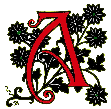
rthur Hopkins, younger brother of the poet Gerard Manley Hopkins, was born on 30 December 1848 into the family of a prosperous marine insurance agent in Stratford, then in Essex. Whereas Gerard went on to Balliol College, Oxford, and joined the Puseyites, Arthur, who had been educated at Lancing College in Sussex, worked in a London office before entering the Royal Academy schools in 1872.
Arthur went on to exhibit in various London galleries, chiefly those of the Royal Water-Colour Society and the Royal Academy, but over twenty-five years he also contributed illustrations to The Graphic, Punch, and The Illustrated London News. He was made an Associate of the Royal Water-Colour Society in 1877, becoming a member in 1896. His younger brother Everard (1860-1928) was also a graphic artist, and painted in watercolours as well. Gerard too was a fine draughtsman, in addition to becoming a renowned poet.
Arthur Hopkins' genre scenes of country life are in much the style of another artist who, like him, illustrated the work of Thomas Hardy — Helen Patterson Allingham. He was a member of the rising generation of illustrators influenced by George du Maurier and William Small, and, as Forrest Reid remarks, was a good draughtsman, with "a strong dramatic sense, to which is added a sense of character" (269). On the staff of The Illustrated London News in 1873, he redrew William Simpson's drawings of the Modoc Indian War of 1872-73. As a member Mary Elizabeth Braddon's staff at Belgravia: A London Magazine, he illustrated Sensation novelist James Payn's By Proxy (1877) and Confidential Agent (1879), Wilkie Collins's Haunted Hotel (1878), Charles Gibbon's Queen of the Meadow (1879), and Justin McCarthy's Donna Quixote (1879). In 1911, Arthur Hopkins' watercolour Agitated Sea sold at auction for £5 15s 6d.
As regards Arthur's work for Hardy, the thorough countryman, one wonders how much he was influenced by the author's conception of Egdon Heath, portrayed rather generally in the first two numbers of The Return of the Native, but so much more atmospherically and evocatively in the July instalment, The stakes were won by Wildeve (Vol. 36: frontispiece). In the next month's issue, Hopkins adds a further dimension to Egdon Heath, for its vegetable life seems almost to engulf the furze cutters, opposing their stubby knives with menacing tentacles that swirl around the cutters like unruly waves in Unconscious of her presence, he still went on singing (Vol. 36: to face 238).
Bibliography
Allingham, Philip V. "A Consideration of the Illustrations for The Return of the Native, Jan.-Dec. 1878 (by Arthur Hopkins, A. R. W. S.)." The Thomas Hardy Year Book No. 23 (1996): 44-63.
Dalziel, Pamela. "Anxieties of Representation: The Serial Illustrations of Hardy's The Return of the Native." Nineteenth-Century Literature 51, 1 (June, 1996): 84-110.
Hardy, Thomas. The Return of the Native. Belgravia (London) Vols. 34-37. With twelve illustrations by Arthur Hopkins. January through December 1878.
Hardy, Thomas. The Return of the Native. Ed. Simon Avery. Peterborough, ON: Broadview, 2013.
Jackson, Arlene M. Illustration and the Novels of Thomas Hardy. Towtowa, NJ: Rowman and Littlefield, 1981.
Purdy, Richard Little, and Millgate, Michael, eds. The Collected Letters of Thomas Hardy . Oxford: Clarendon, 1978. Vol. 1 (1840-1892).
Reid, Forrest. Illustrators of the Sixties. London: Faber & Gwyer, 1928.
Vann, J. Don. "The Return of the Native in Belgravia, January-December 1878." Victorian Novels in Serial. New York: MLA, 1985. 84.
Wood, Christopher. Dictionary of Victorian Painters. Woodbridge, Suffolk: Antique Collectors' Club, 1978. 2nd ed.
Wright, Sarah Bird. "The Return of the Native." Thomas Hardy A to Z: The Essential Reference to His Life and Works. New York: Facts On File, 2002. Pp. 261-270.
Created 5 December 2000
Last modified 26 June 2025